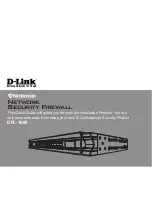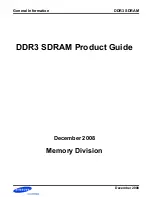
2-58
BreezeACCESS Version 4.5 Operations and Administration
Manual Revision: 1.0
Power Control Parameters
The power control parameters enable to optimize the performance of the
system through controlling the transmitted power level of
BreezeACCESS units. The transmitted power level of the unit should be
decreased from the maximum level that is supported by the unit in the
following cases:
!
In a Subscriber Unit that is relatively close to the Access Unit, in
order to minimize the interference to signals received by the AU from
other subscriber units as well as interference to neighboring cells.
!
In an Access Unit typically the maximum supported transmit power
is used to enable maximum coverage. However, there may be a need
to decrease the transmitted power level in order to support relatively
small cells and to minimize the interference with the operation of
neighboring cells.
!
If required for compliance with local regulations or other restrictions
related to maximum allowable transmitted power. For example, for
compliance with FCC requirements the output power in units that
operate in HDM Mode should not exceed 19 dBm.
In addition to the ability to set the transmit power to a certain fixed
level, IF-Based units (SU-A/E, AU-BS and AU-NI) support an
Automatic Transmit Power Control (ATPC) algorithm. The ATPC
algorithm automatically adjusts the power level transmitted by each SU
according to the actual level at which it is received by the AU. To
support proper operation of the system with optimal performance and
minimum interference between neighboring sectors, the ATPC algorithm
should be enabled in all units.
The algorithm is controlled by the AU that calculates for each received
frame the average RSSI at which it receives transmissions from the
specific SU. The average calculation takes into account the previous
calculated average, thus reducing the effect of short temporary changes
in link conditions. The weight of history (the previous value) in the
formula used for calculating the average RSSI is determined by a
configurable parameter. In addition, the higher the time that has passed
since last calculation, the lower is the impact of history on the
calculated average. If the average RSSI is not in the optimal range
(typically between -74dBm to -64dBm), the AU transmits to the SU a
power-up or a power-down message. The target is that each SU will be
received at an optimal level, or as high as possible if the optimal range
cannot be reached because of specific link conditions.
Each time that the SU tries to associate with the AU (following either a
reset or loss of synchronization), it will initiate transmissions using the
Current Transmit Power Control
, which is the last value that was
previously used by the ATPC mechanism. If after a certain configurable
time the SU did not succeed to synchronize with the AU, it will start
transmitting using the level configured for the
Transmit Power Control
parameter. (If this is the first time that the SU is powered up, or if the
ATPC algorithm was not used, the
Current Transmit Power Control
equals the value of
Transmit Power Control
).
Summary of Contents for BreezeACCESS II
Page 1: ...BreezeACCESS II System Manual SW Version 4 5 June 2004 P N 213801 ...
Page 2: ......
Page 15: ...BreezeACCESS II SW Version 4 5 Revision 1 0 System Manual Book 1 System Description ...
Page 16: ......
Page 32: ...2 14 BreezeACCESS Version 4 5 System Description Manual Revision 1 0 ...
Page 46: ...3 14 BreezeACCESS Version 4 5 System Description Manual Revision 1 0 ...
Page 47: ...BreezeACCESS II SW Version 4 5 Revision 1 0 System Manual Book 2 Installation ...
Page 48: ......
Page 80: ...2 8 BreezeACCESS Version 4 5 Installation Manual Revision 1 0 ...
Page 93: ...BreezeACCESS II SW Version 4 5 Revision 1 0 System Manual Book 3 Commissioning ...
Page 94: ......
Page 110: ...2 8 BreezeACCESS Version 4 5 Commissioning Manual Revision 1 0 ...
Page 116: ...3 6 BreezeACCESS Version 4 5 Commissioning Manual Revision 1 0 ...
Page 126: ......
Page 257: ...BreezeACCESS II SW Version 4 5 Revision 1 0 System Manual Appendices ...
Page 258: ......
Page 270: ...D 4 BreezeACCESS Version 4 5 System Manual Manual Revision 1 0 ...
Page 324: ...1 14 BreezeACCESS Version 4 5 Index Manual Revision 1 0 ...
















































